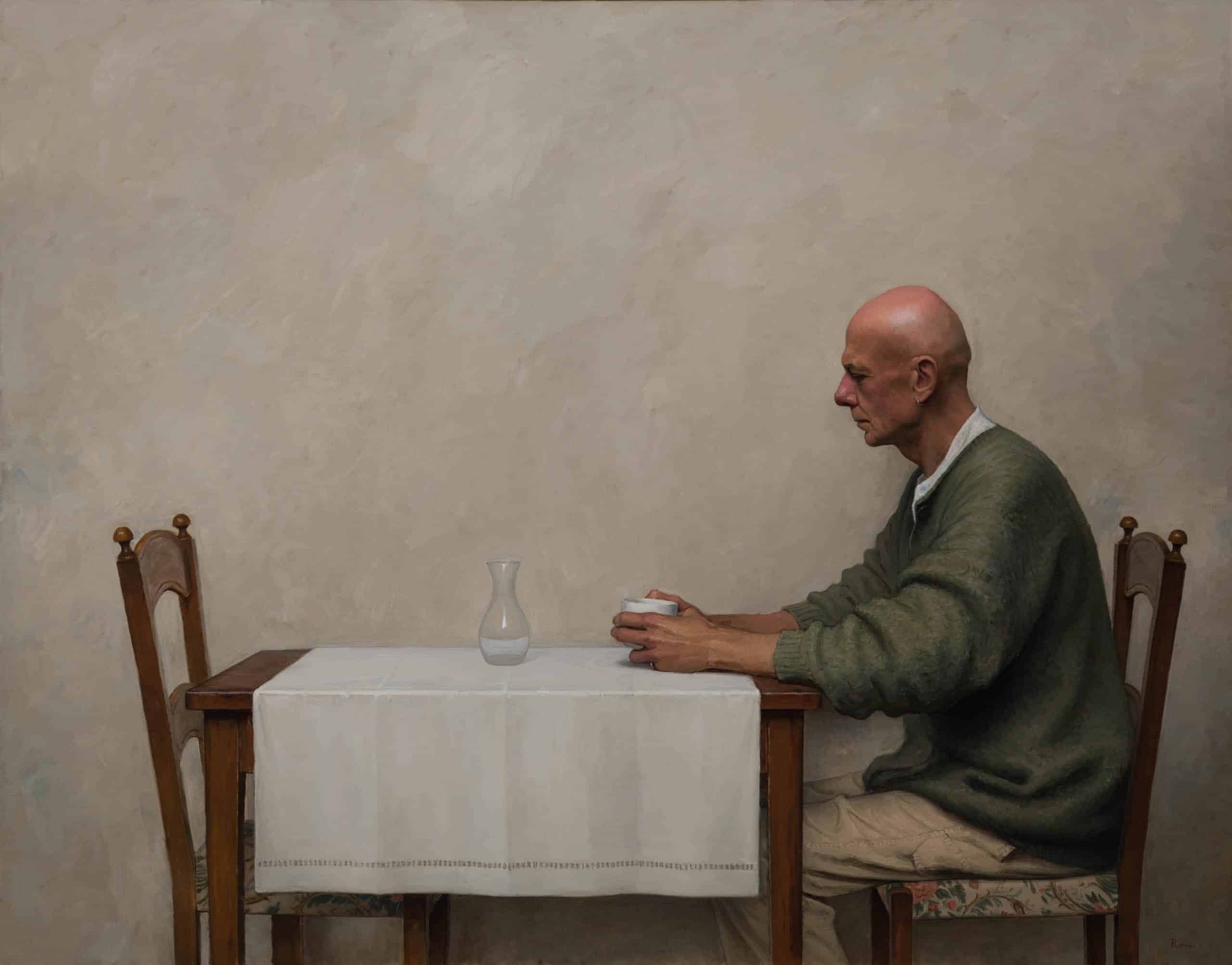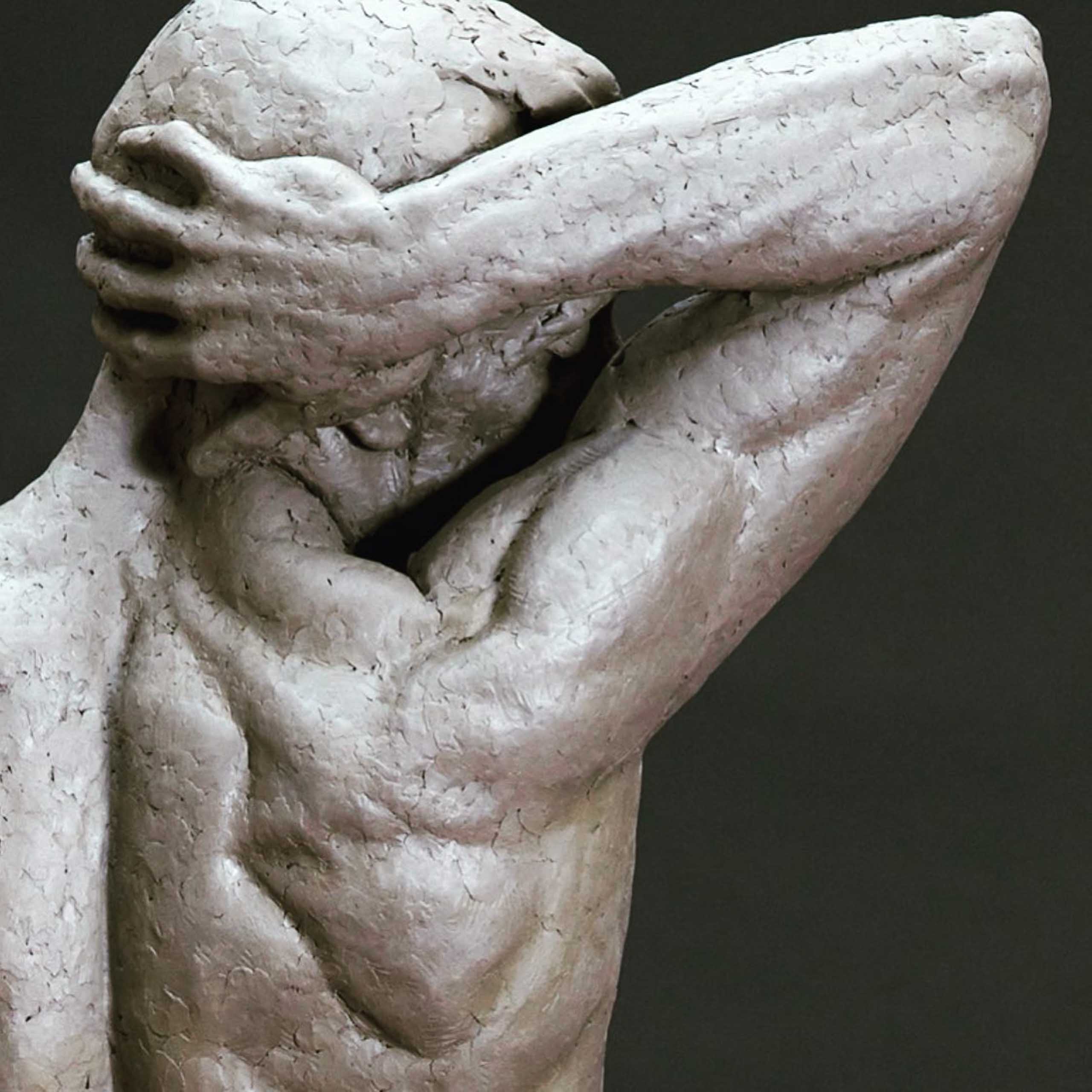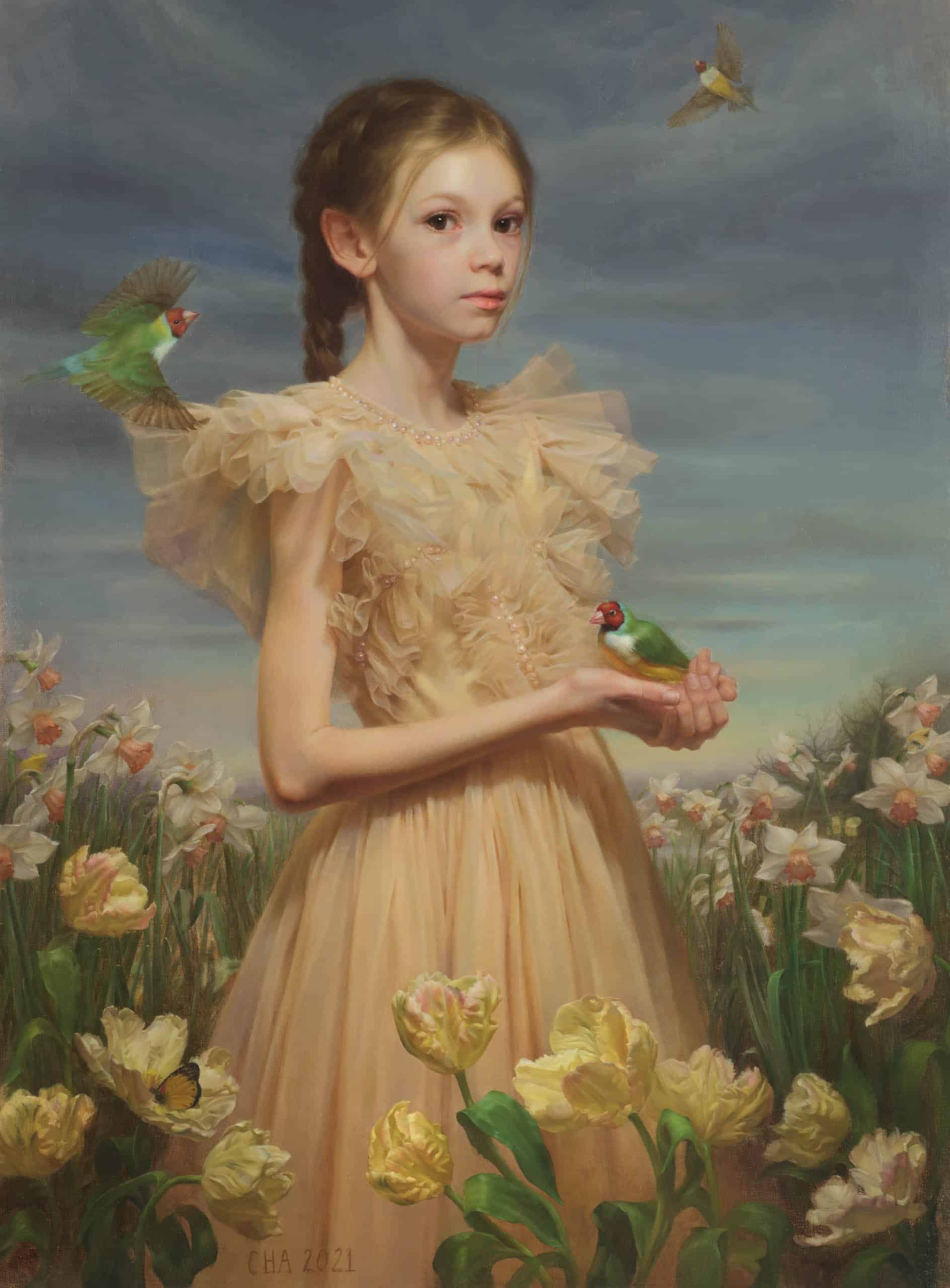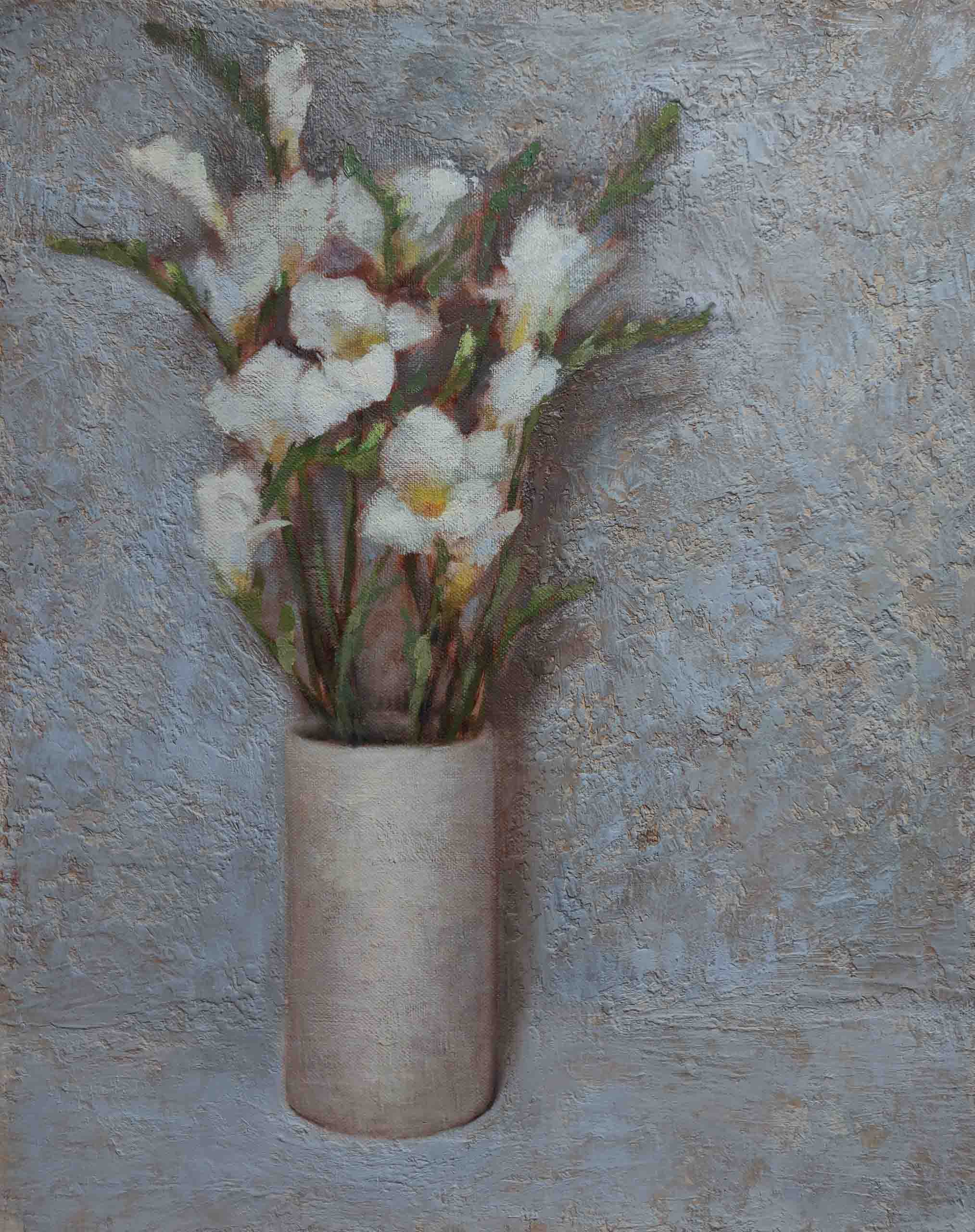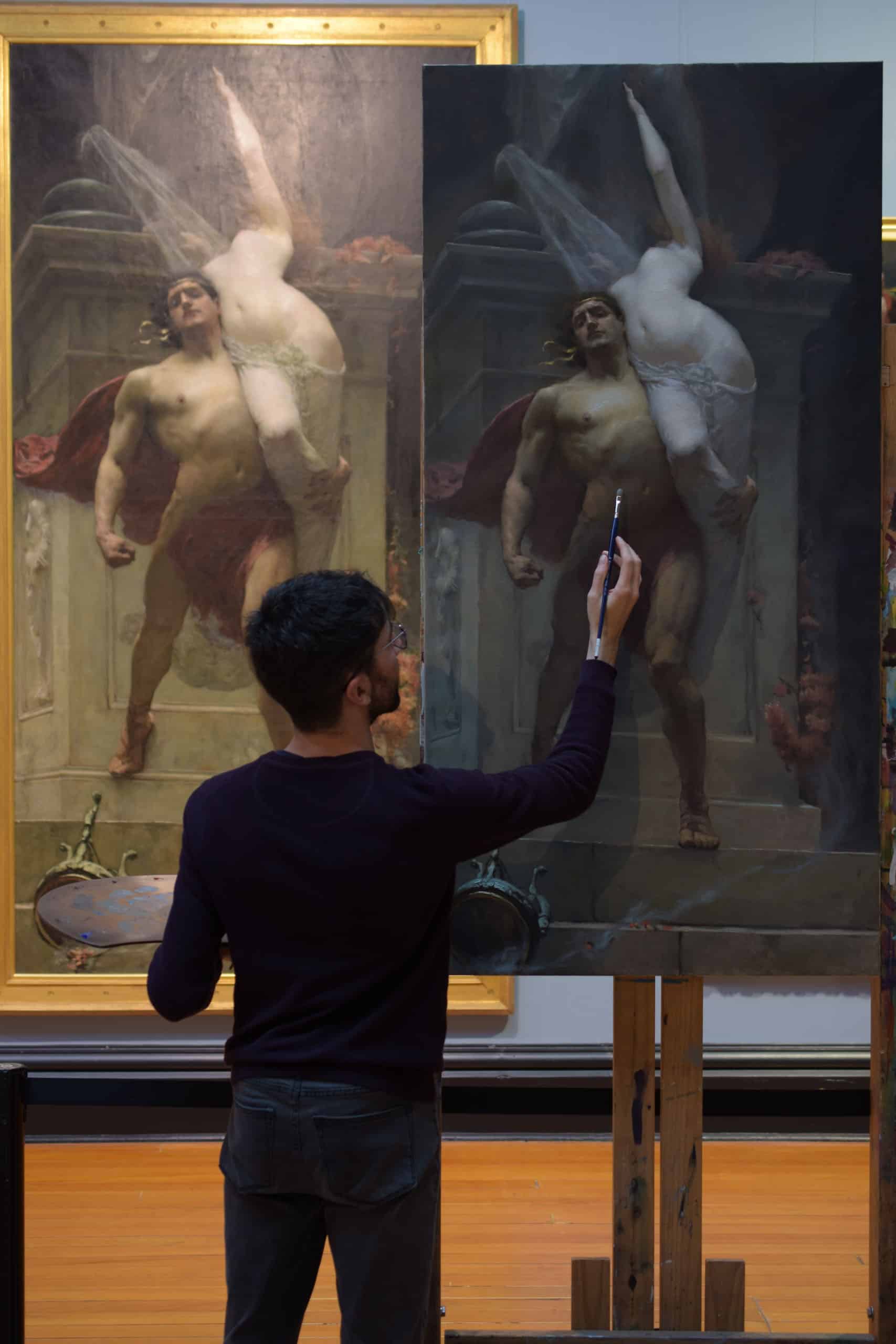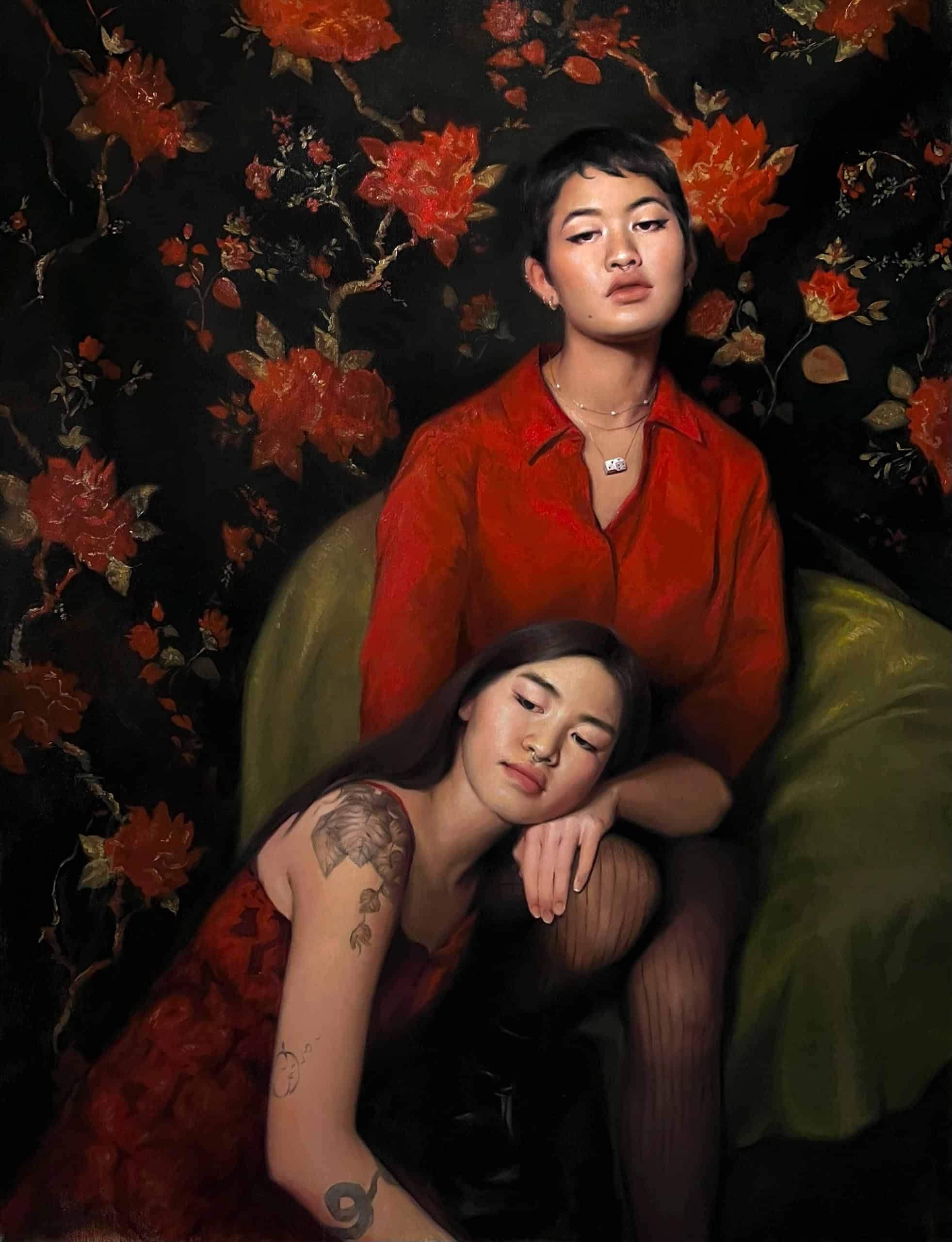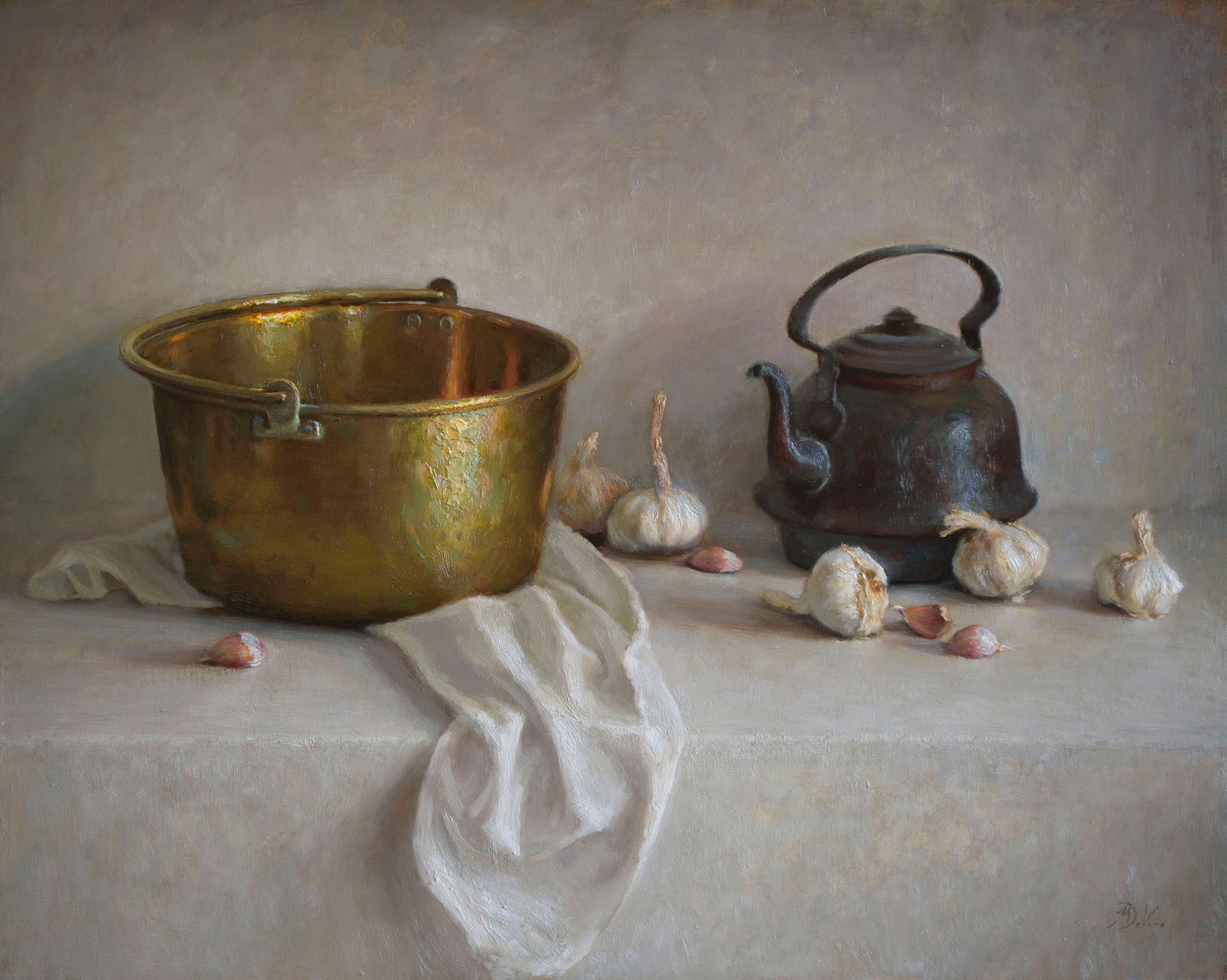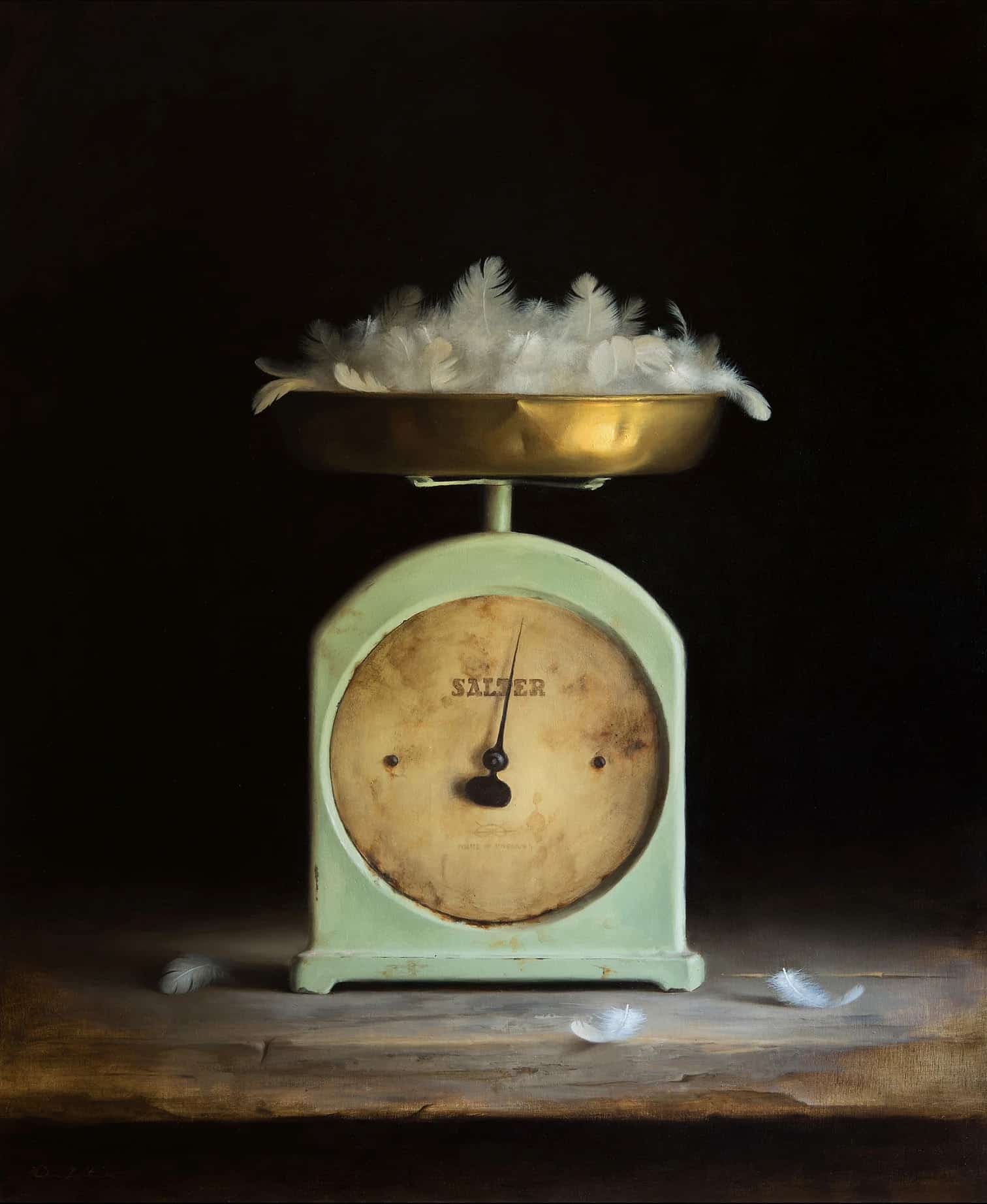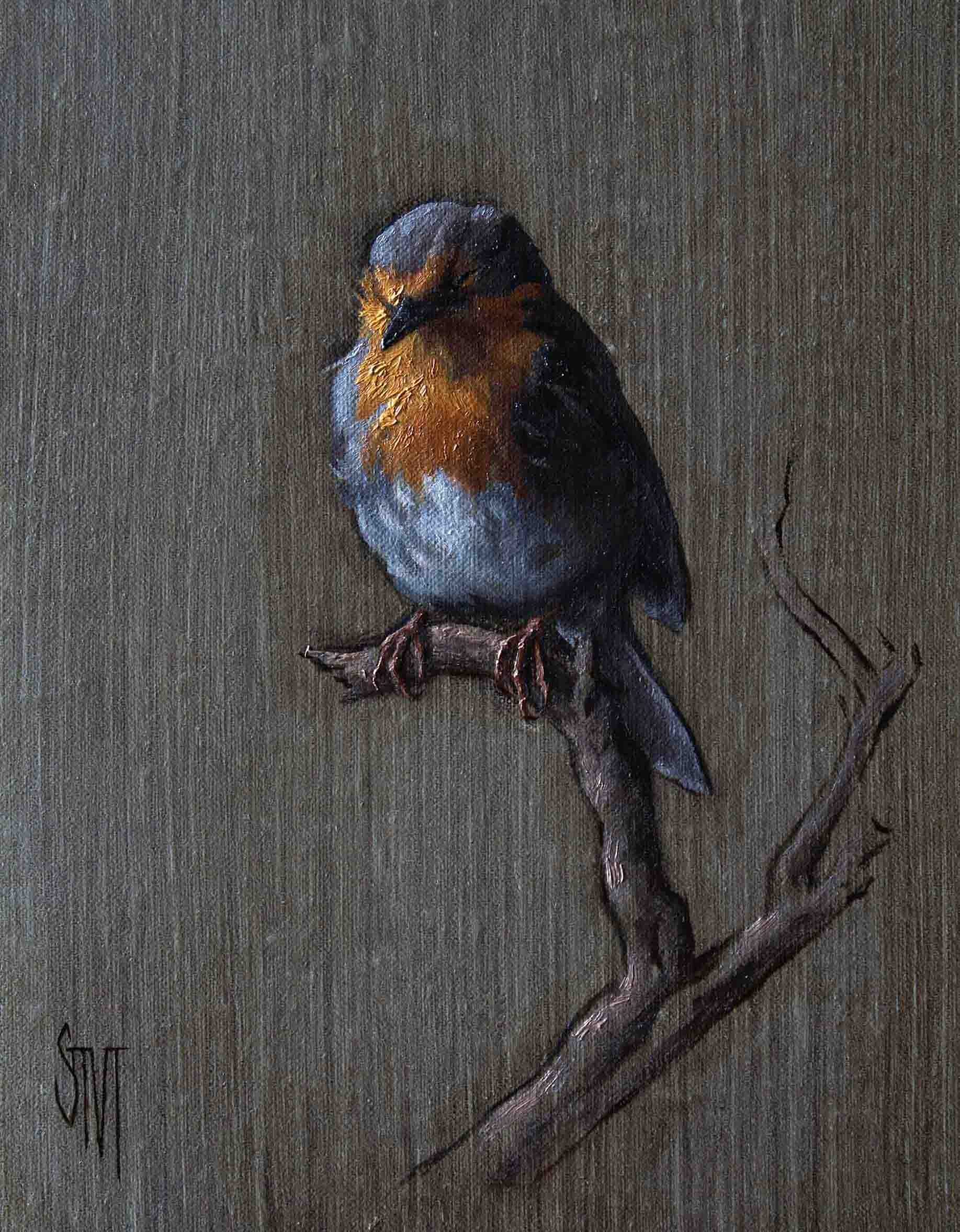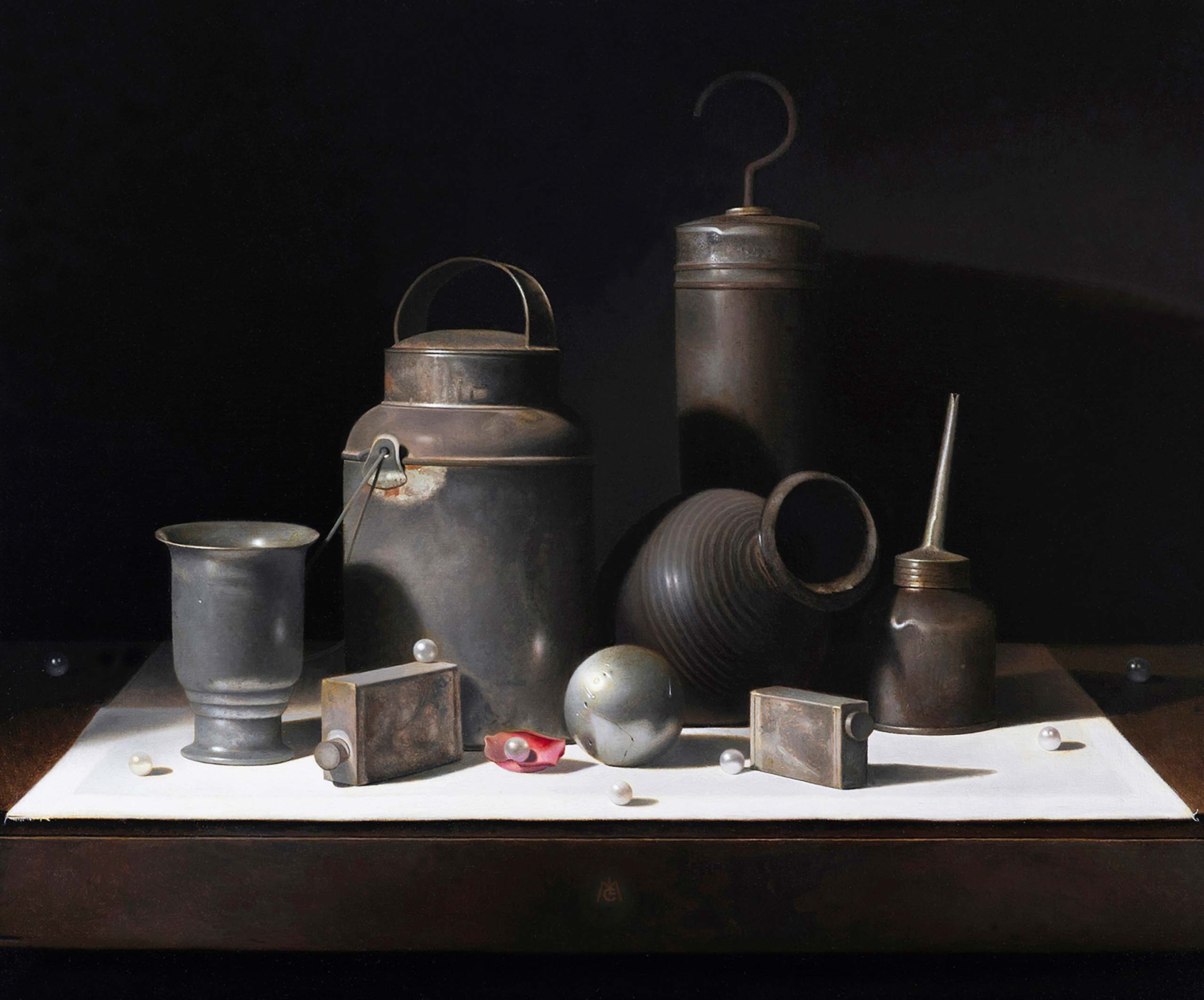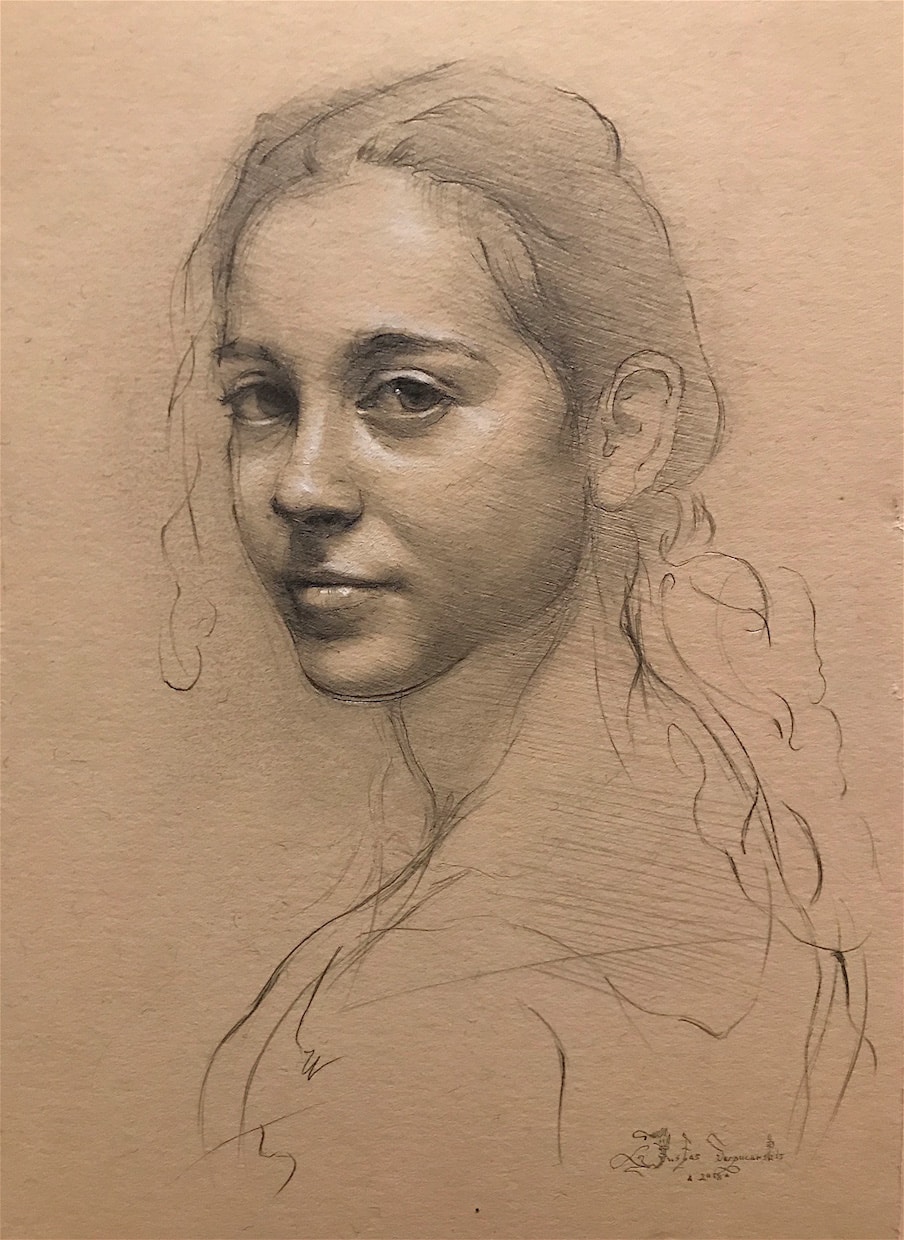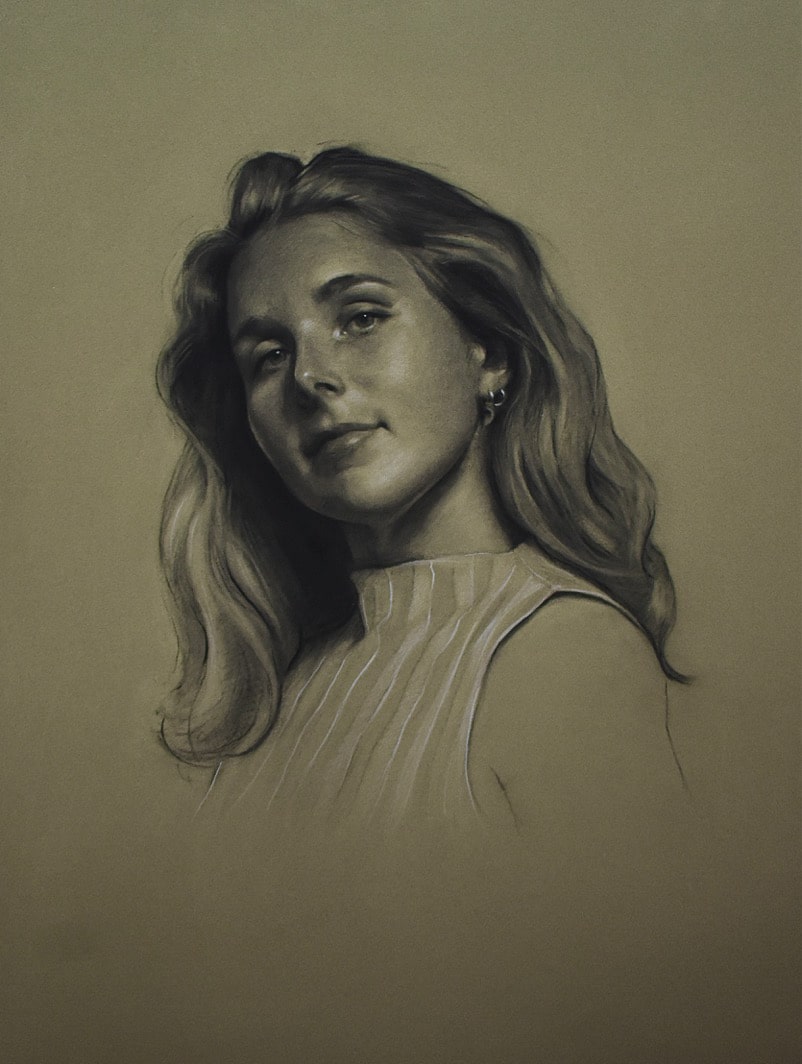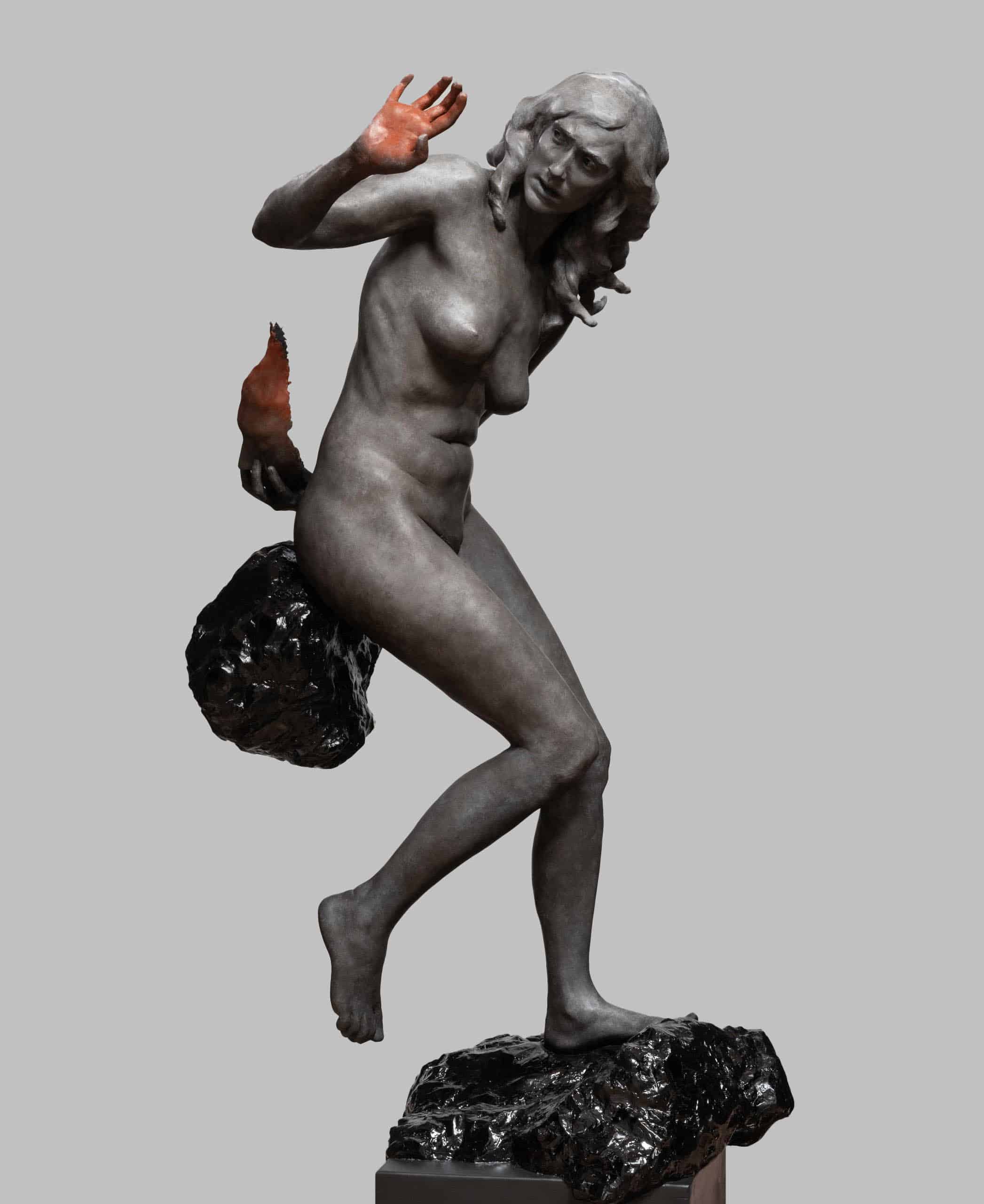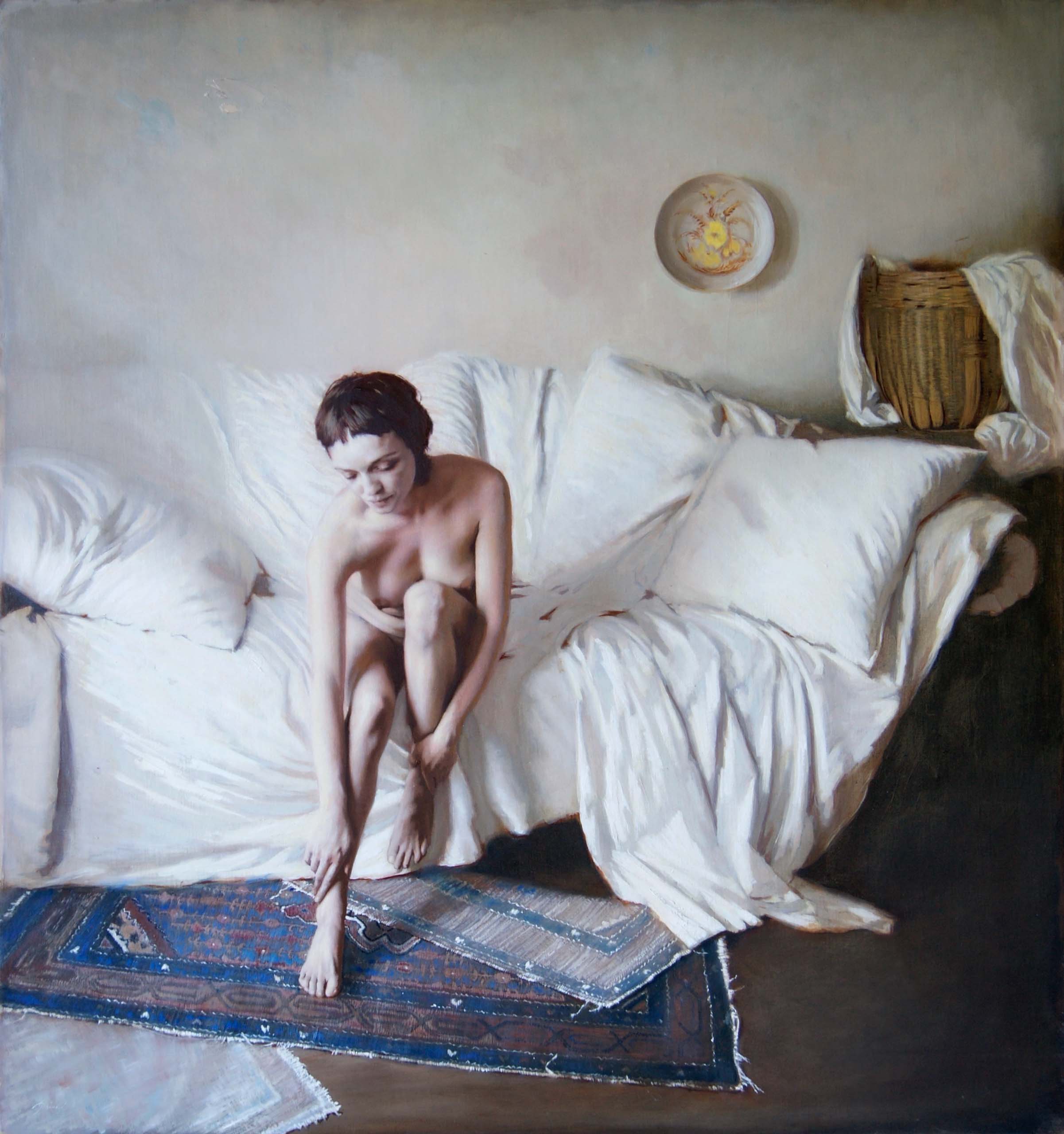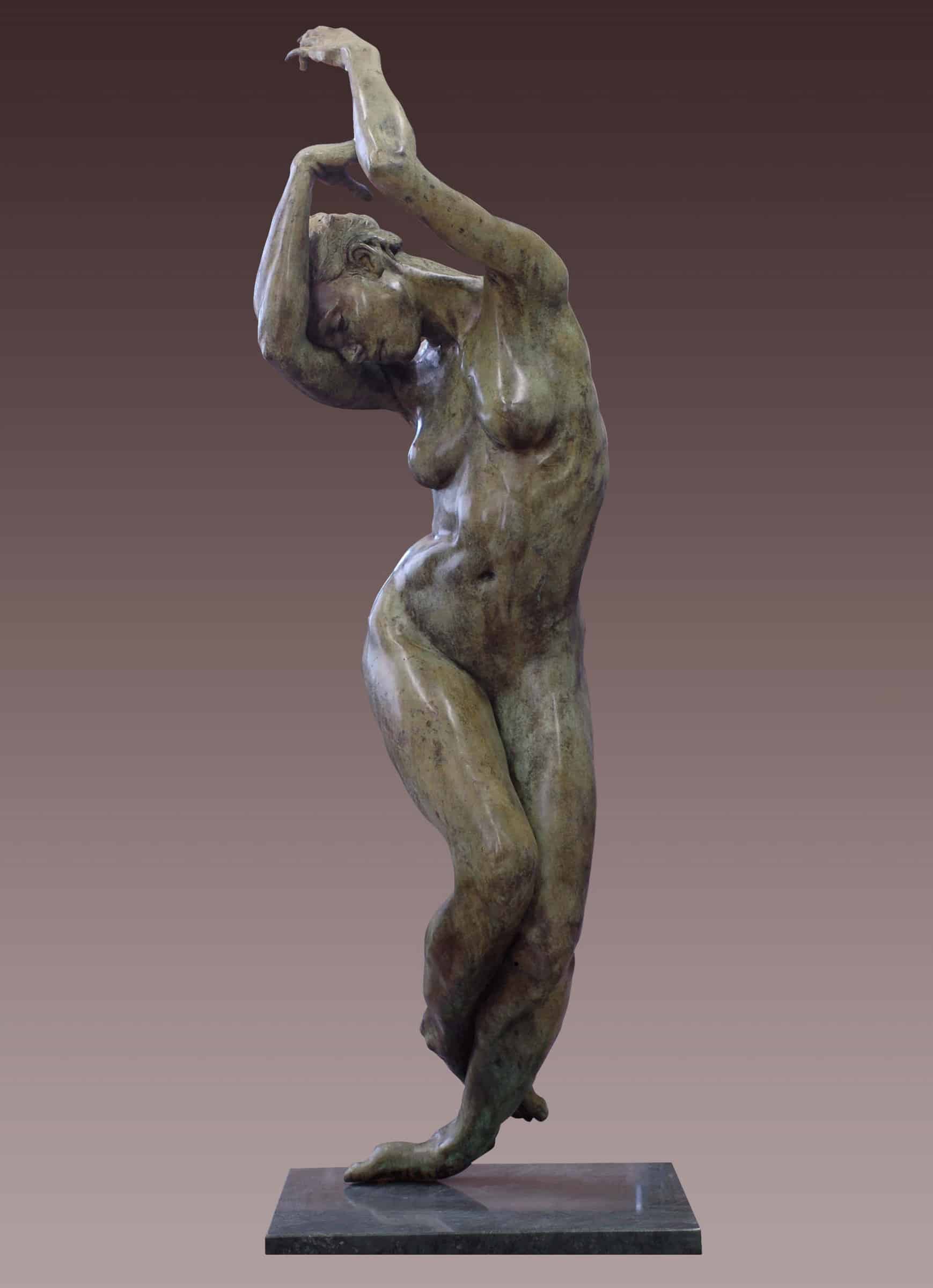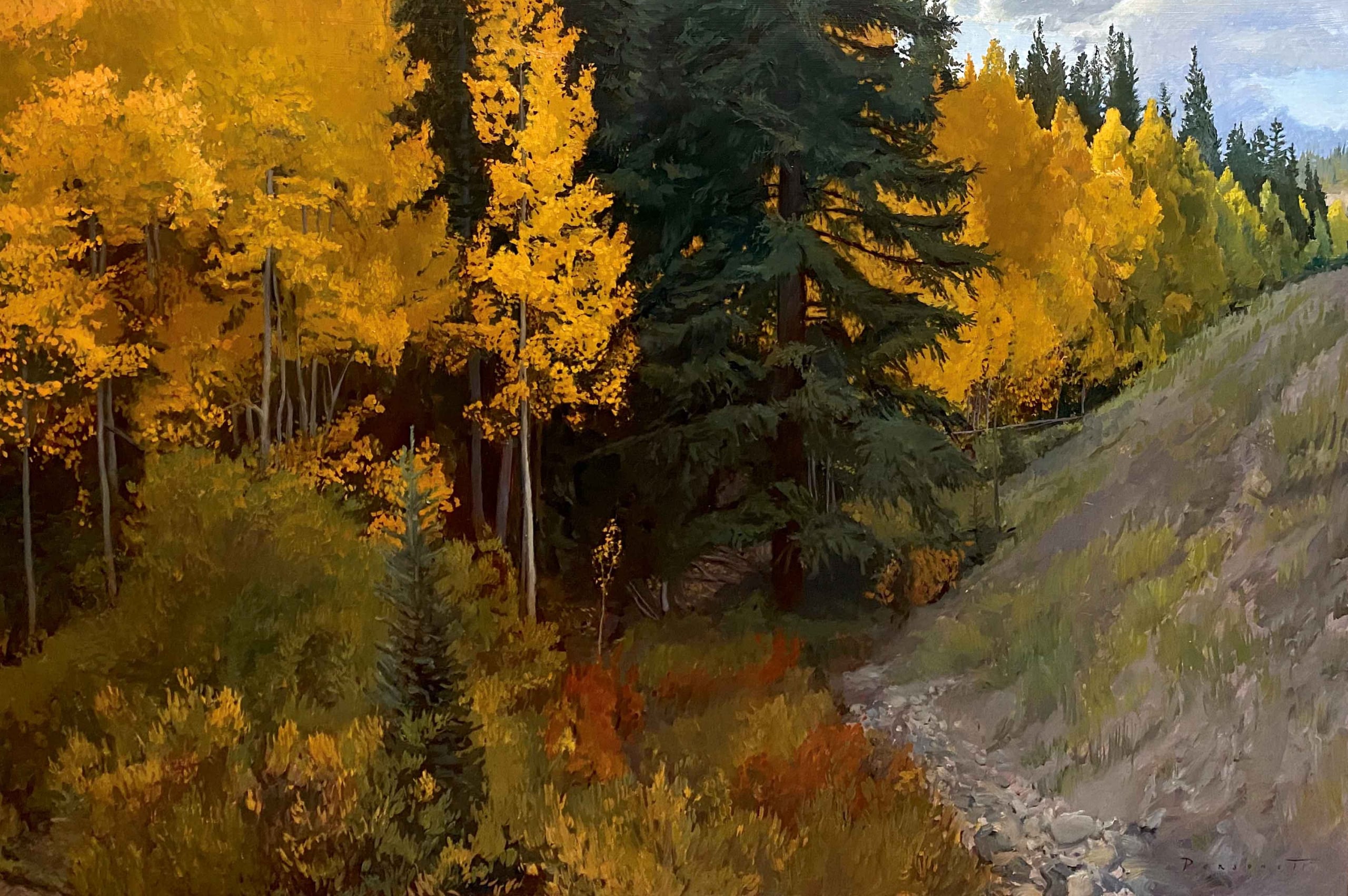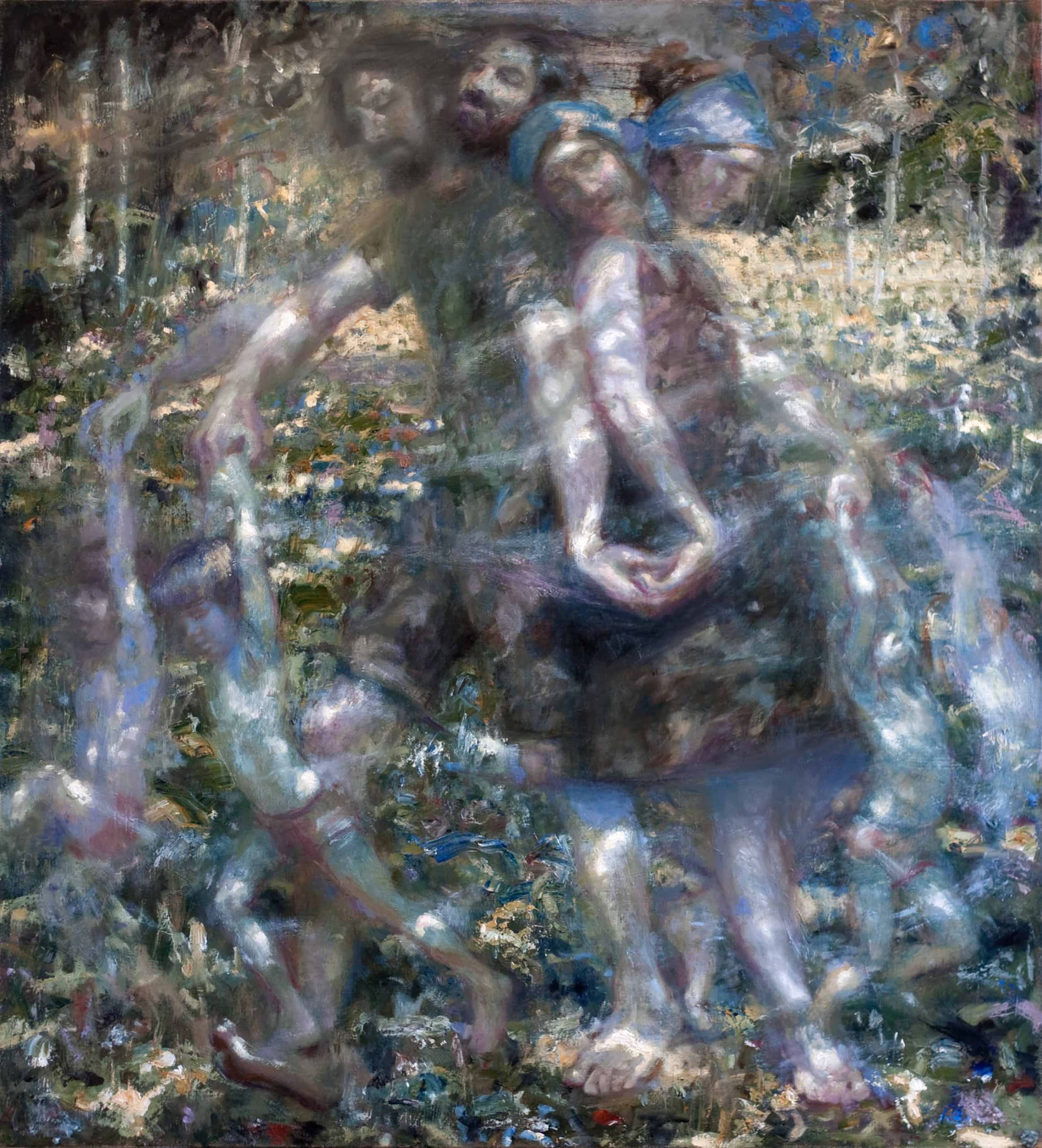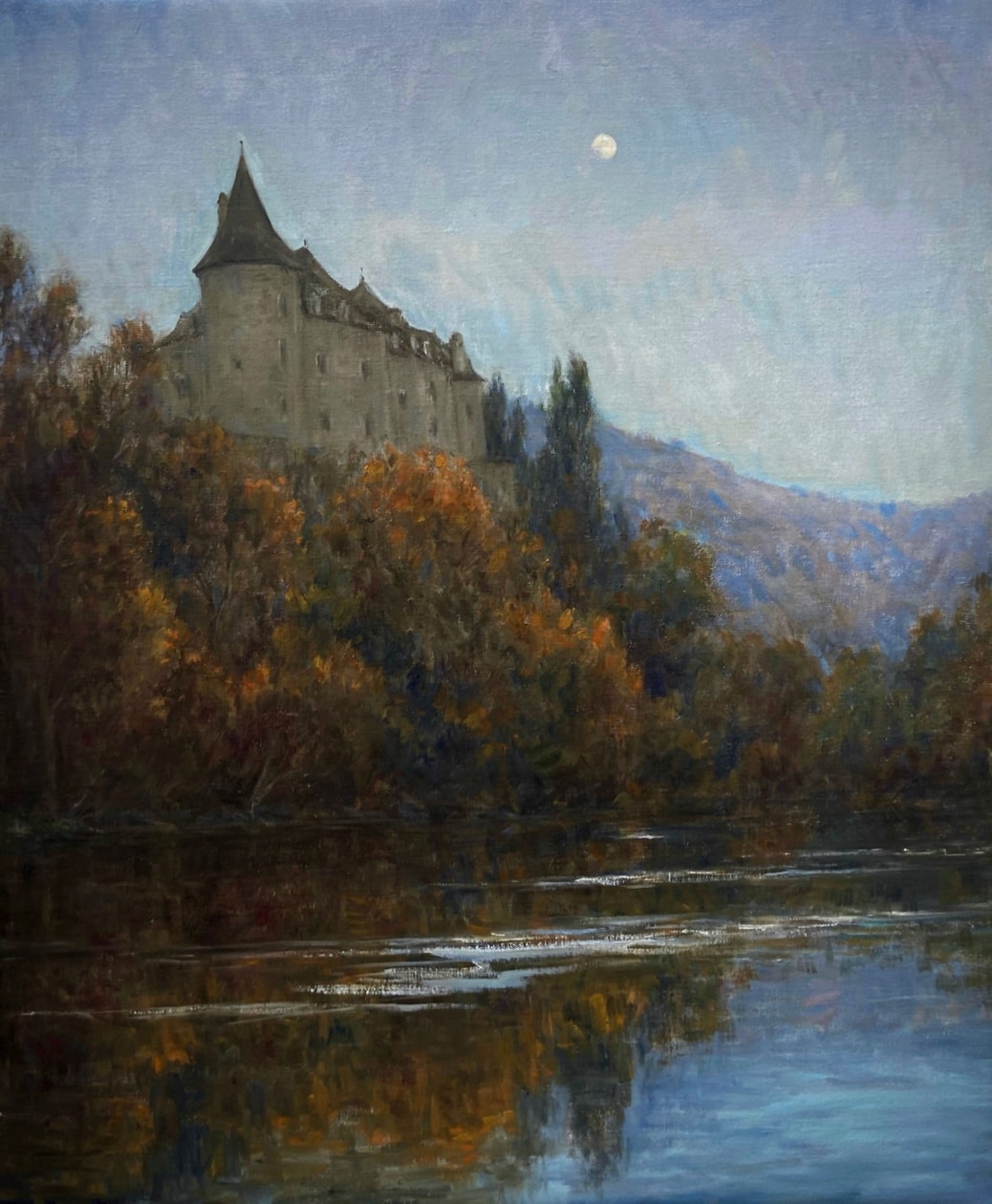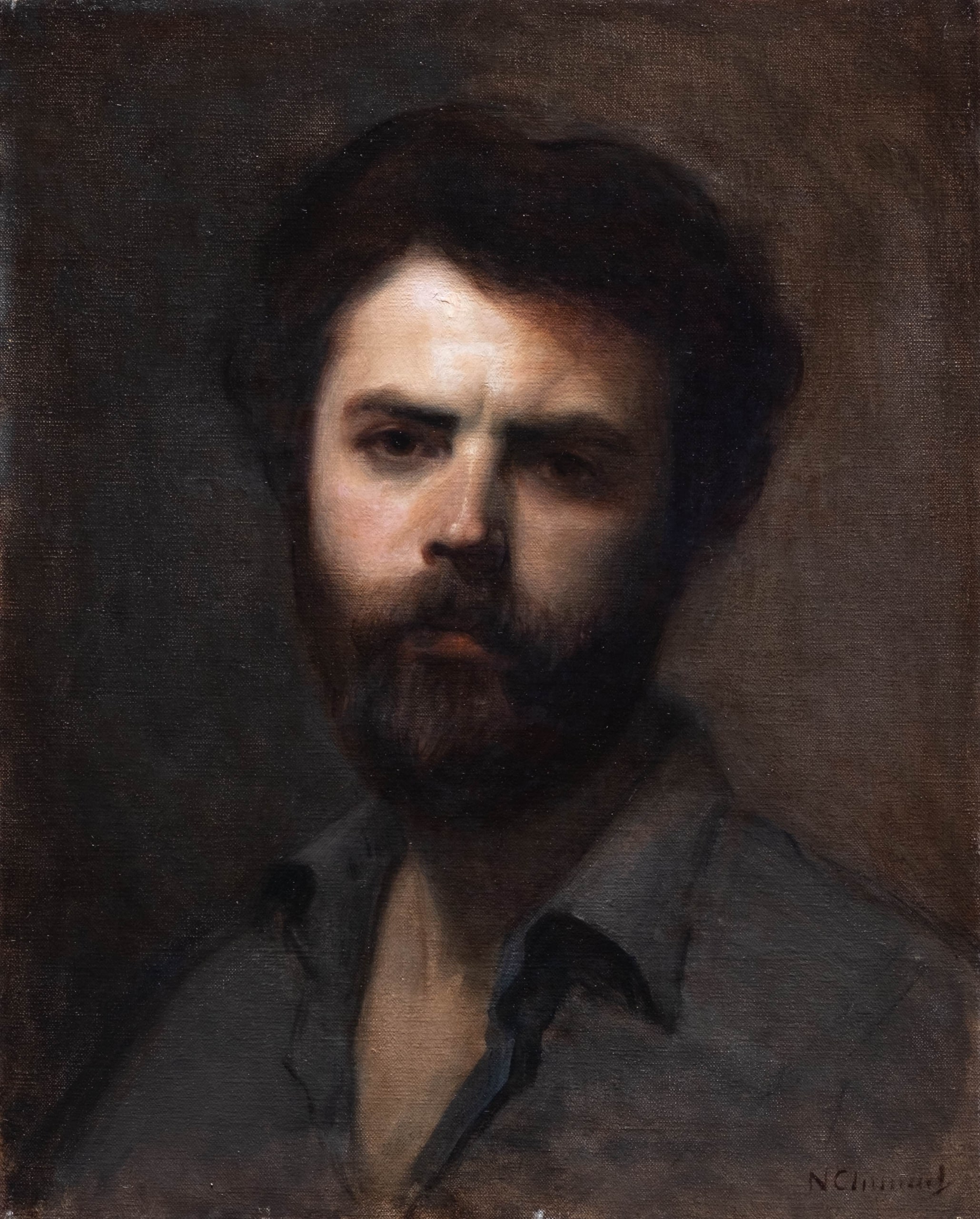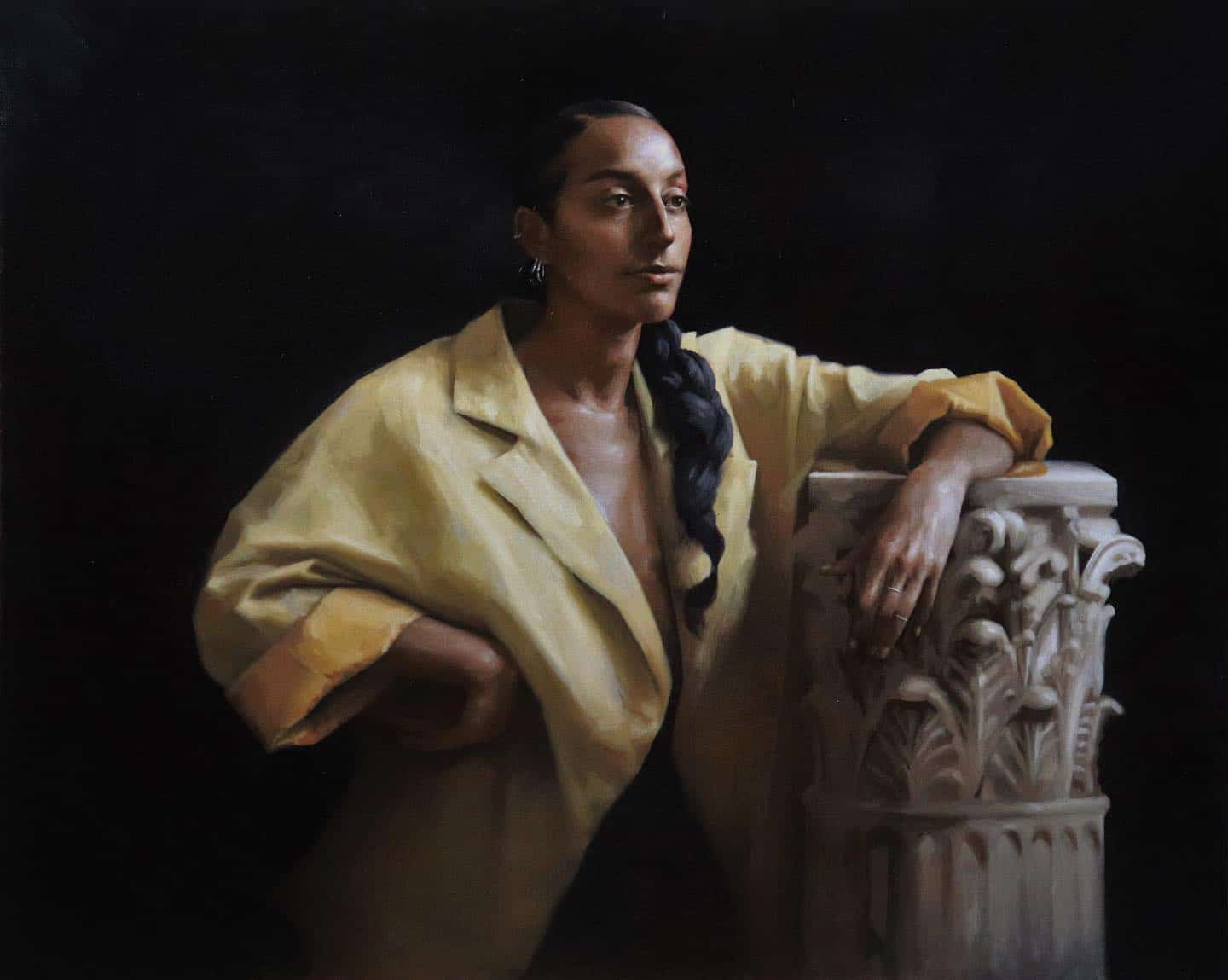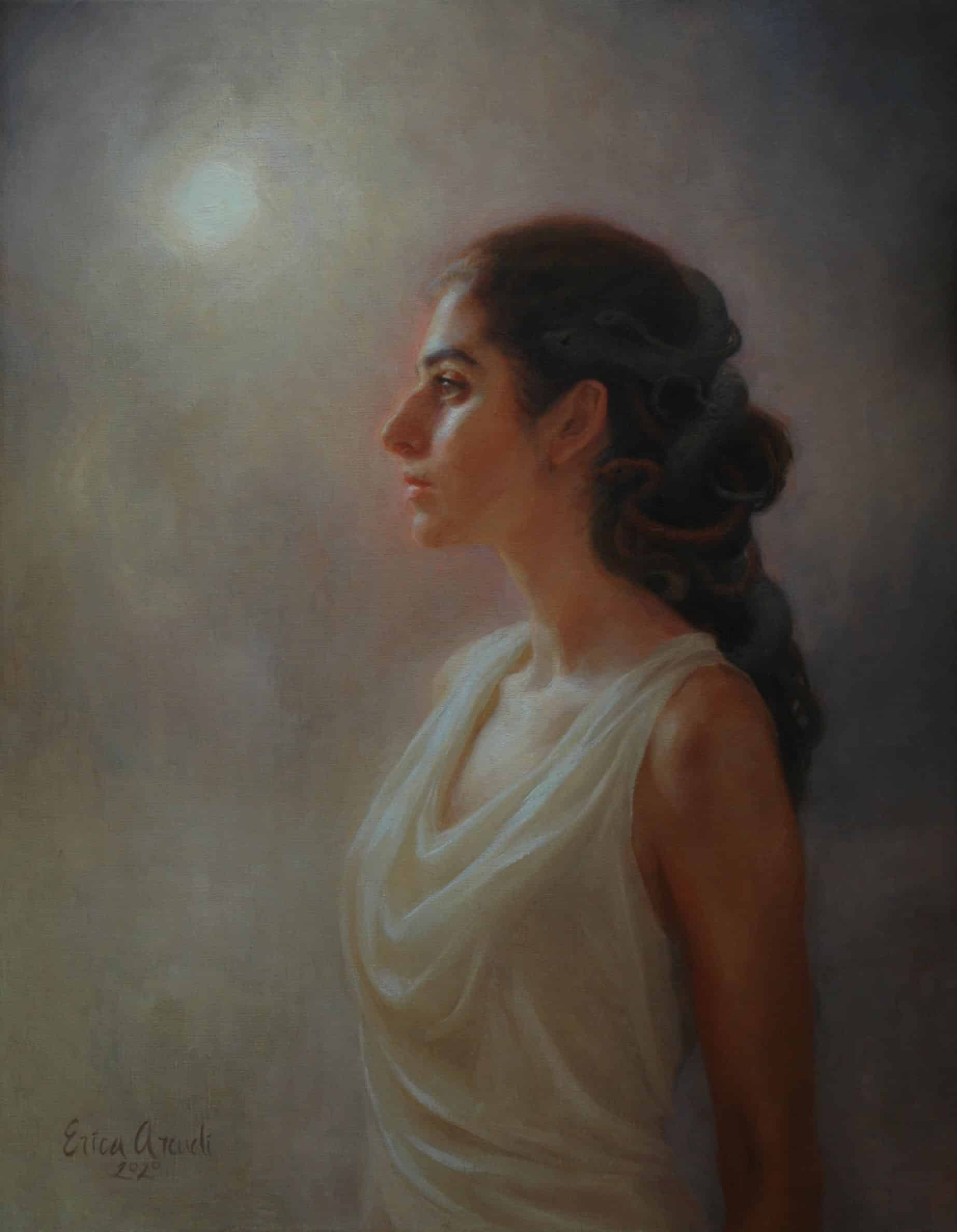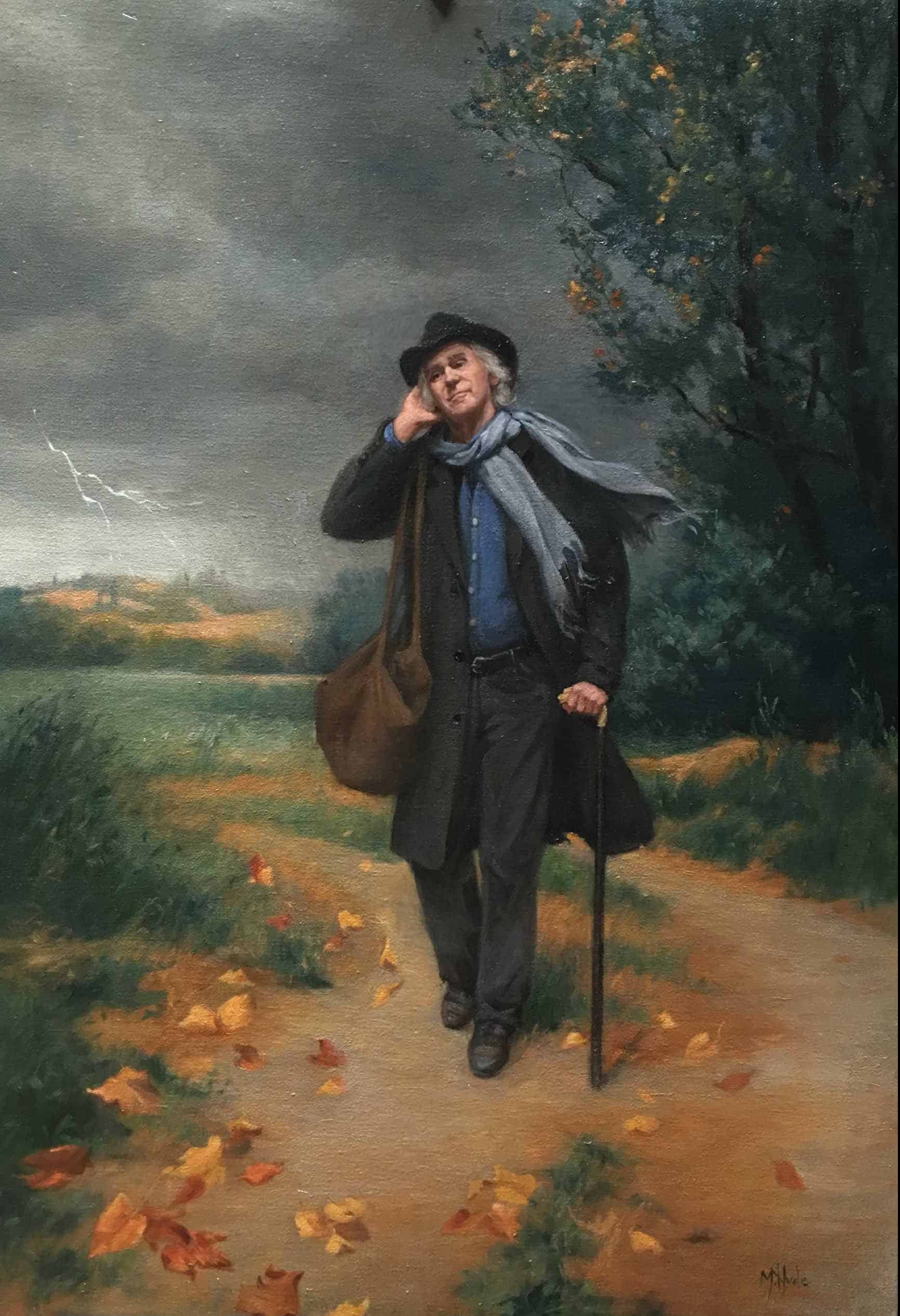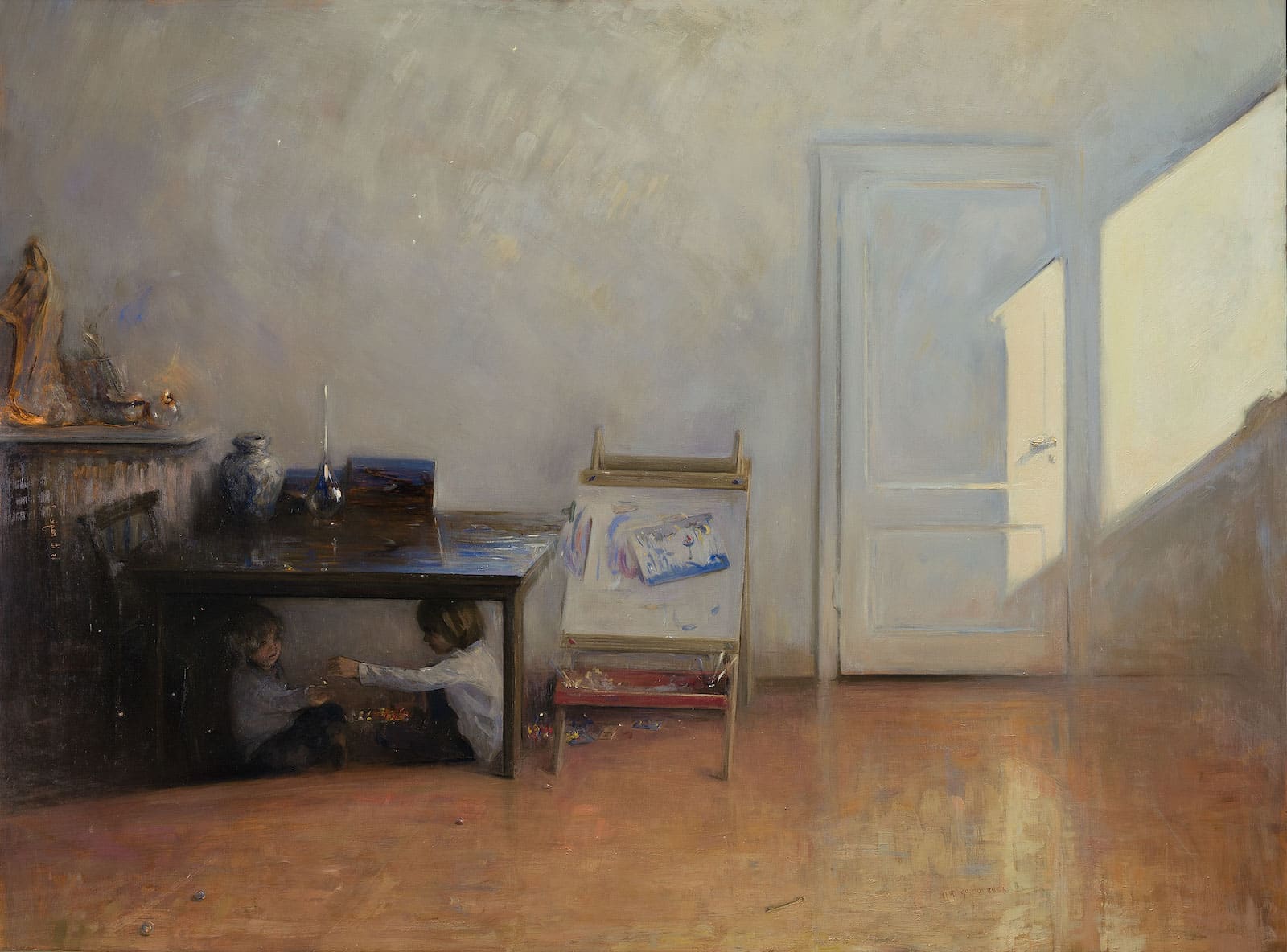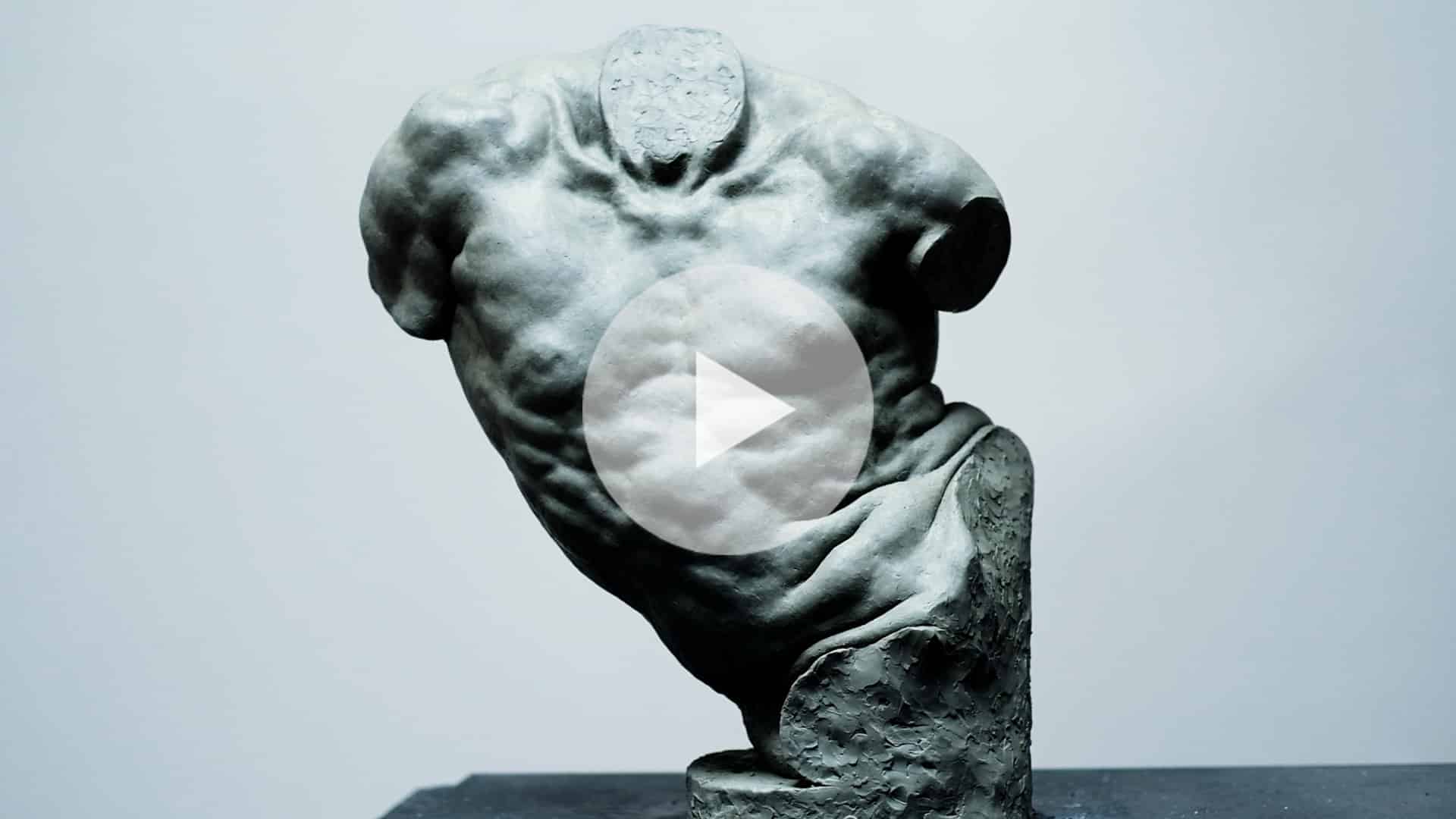November 25, 2021 / Spotlight on Art
The Life size Écorché by
Marusia Nita
All along the project I had two motivations: to improve my knowledge of anatomy and to follow in the footsteps of Constantin Brancusi in terms of anatomical study.
Marusia Nita, "Life size Écorché", 2016

We are pleased to share with you the story behind one of the pieces of The Florence Academy of Art’s permanent collection, The Life size Écorché by Marusia Nita.
“Between 2015 and 2016, I sculpted a life size skeleton and écorché.
The project seemed at the time a necessary step in my gaining an understanding of the human body from a scientific point of view, but on a deeper level, it was fulfilling an old desire borne out of appreciation for sculptor, Constantin Brâncusi (b. 1876 in Romania – d. 1957 in Paris).
I was introduced to Brâncusi’s work and philosophy during high school. His thoughts, gathered in a book called “Brâncusi’s Aphorisms”, resonate with me for their spiritual connotation, as does his exploration of the essence of things. One of my favorite quotes of his is:
When you see a fish you don’t think of its scales, do you? You think of its speed, its floating, flashing body seen through the water. Well, I’ve tried to express just that. If I made fins and eyes and scales, I would arrest its movement, give a pattern or shape of reality. I want just the flash of its spirits.
While studying at the Fine Arts University in Bucharest, I had the chance to draw from a copy of his life size écorché. It was the first time I saw his work from life; I looked at it for days, and let it settle in my heart that it was a good idea to build a life size écorché in order to learn the anatomy of the human body. Years later, in 2015, I got the opportunity to do just that, together with a friend and fellow artist, Janne Jaskeleinen.
Janne was Director of Anatomy at The Florence Academy of Art where I had been a student. We worked in his private studio at one of the FAA’s locations in Florence. Together, we each built a life size écorché, selecting different poses.


Views of the life size skeleton sculpted in water based clay.
From the moment FAA Founder and Director, Daniel Graves, took interest in my écorché, the project became a commission: the FAA would sustain the cost of the mould and plasters, something that gave me the possibility to build and cast first a skeleton, and later add the muscle layers on top, from deep to superficial, to construct the écorché.
The skeleton and écorché sculptures took about one year each to create, including making the moulds and creating the casts.


Alessandro Petrucci working on the mother mould.
The moulds were made by one of the best professional mould makers from Pietrasanta, Italy, Alessandro Petrucci. Working both in the FAA studio and at his private atelier in Pietrasanta, Alessandro made the cast for both the skeleton and the écorché.

Details of the open mould and the life size skeleton cast in resin.
After removing the rubber silicon layer from the skeleton, I had to reconstruct the arms, including the armature; most of the skeleton had retained its shape, and this made it possible to mark the original insertion of the muscles to build the muscles that create the external form.
The Écorché Assistant app created by FAA alumnus and fellow artist, Alexander Kafoussias, greatly inspired and aided me, “Ecorché by Alexander”; I highly recommend this application.

Progress shots of Marusia’s life size écorché.
What I chose to do with the life size écorché, was, in addition to anatomy, experiment with design to render a more naturalistic look. To do this, I looked at and studied the Houdon and Brâncusi’s écorchés. Towards the end of the project, I also hired a model with similar proportions to realize the final touches.


Last day of work on the écorché before beginning the mould (photo credit Rony Cadavid) and the final cast.
All along the project I had two motivations: to improve my knowledge of anatomy and to follow in the footsteps of Constantin Brâncusi in terms of anatomical study.”
– Marusia Nita
More about Marusia Nita
Marusia Nita attended the University of Art Bucharest, completing a degree in painting in 2002. She received her diploma from The Florence Academy of Art in Sculpture in 2011. Between 2004-2009, Marusia was a character artist in the games industry working for companies like Ubisoft Bucharest and IOInteractive in Copenhagen. After her training at the Florence Academy, she taught drawing, sculpture and anatomy in Florence at ICACEA (now known as TIAC Academy of Fine Arts), and the Sacred Art School. Marusia works privately in her studio in Italy. Her sculpture Odysseus received ‘Honorable Mention’ in 2015 at Museu Europeu d’Art Modern (MEAM), Barcelona, Spain. The sculpture was purchased by the museum and is part of its permanent collection.



